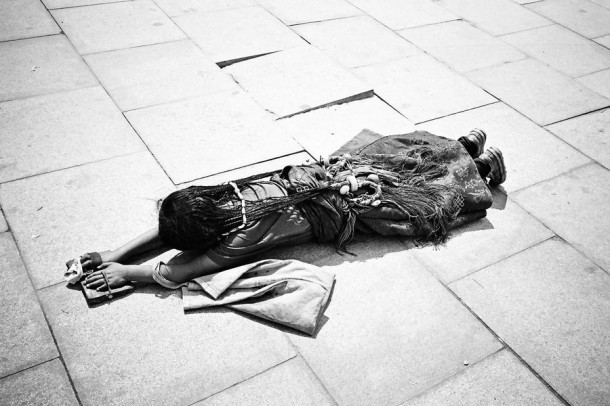Prostration
As soon as you step onto this mysterious land, you will not only be immediately attracted by the snow-clad peaks, the wonderful mountains,but also the brilliant Tibetan culture and the unique, mysterious religious customs of the highland. In Tibetan culture, Buddhism is undoubtedly one of its most important elements. So when you pay a visit to Tibet, you may see many pilgrims are making their way along the long road of prayer. Their way of paying homage to Buddha is called prostration. Explore Tibet, a professional Tibet travel agency, today introduces prostration to you.

Prostration actually is a placement of the body, which in a reverentially or submissively prone position as a gesture. In Tibet religion, employing prostration is an act of worship to some worshiped entities. The gesture has often traditionally regarded as an important part of religious, Tibet traditional rituals and ceremonies. In Tibet,you will always see many crowds of worshipers were silently making body-length prostrations towards the holy sanctum – the original statue of Sakyamuni.
Tibetan pilgrims often progress by prostrating themselves fully at each step, as they get up, then they move forward. They also lay their face on each part of their route. Each three paces involve a full prostration. Some Tibetan pilgrims will pay prostration around stupas, but others will pay their prostration in an extremely arduous pilgrimage. Sometimes it will take about four weeks to complete the their route. Moreover, it is normal to see pilgrims do some prostrating all the way from their home to Lhasa, the process maybe will take up several years to complete.
Comes to Tibet and experience this magical world of culture with Explore Tibet.
Recent Posts
The Perfect Tibet Tour Package
Journey to Tibet
Exploring Tibet
All Categories
- About Tibet
- book a Tibet tour
- Buddhism Practice
- Budget Tour
- China-Tibet Train
- Customized Tibet tour
- Historical Sites
- Hot Springs in Tibet
- News
- Photography in Tibet
- Tibet attraction
- Tibet Group Visa
- Tibet Motorcycle Tour
- Tibet Small Group Tours
- Tibet Tours and Tibetan Tour Guide
- Tibet Train
- Tibet Travel FAQs
- Tibet Travel Information
- Tibet Travel News
- Tibet Travel Permit Update
- Tibet Travel Prices Rises
- Tibet Trek
- Tibet Trekking Tour
- Tibet weather and climate
- Tibet Wildlife animals
- Tibet Winter Tour
- Tibetan Buddhism
- Tibetan Cultural Features
- Tibetan Culture and Poeple
- Tibetan Festivals
- What to see in Tibet



